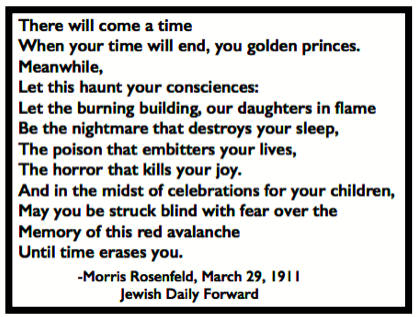 —————
—————
Hellraisers Journal – Friday May 5, 1911
“The Triangle Fire” by Martha Bensley Bruere, Part I
From Life and Labor of May 1911:
The Triangle Fire
By Martha Bensley Bruere
The Triangle Shirt Waist Shop in New York City, which was the scene of the great fire on March 25th, when 143 [146] workers were killed, was also the starting point of the strike of the forty-thousand shirt waist workers in 1909.
The girls struck because they wished to stand together for decent shop conditions, wages on which they could live and reasonable hours, and neither Mr. Harris nor Mr. Blanck, both of whom were members of the Manufacturers’ Association, would allow their workers to unite in any way at all.
It happened that I did picket duty morning and night before that shop and saw the striking girls go up to the strike-breakers and ask timidly:
“Don’t you know there’s a strike by the Triangle?”
It was before this Triangle Shop that the girls were clubbed by the police and by the hired thugs who assisted them; and it was in the streets around it that a large number of arrests were made. The girl pickets were dragged to court, but every one from this shop was discharged. The police and the government of the city had banded themselves together to protect the property of Harris and Blanck, the Triangle Shirt Waist firm.
The six hundred girls who worked at the Triangle Shop were beaten in the strike. They had to go back without the recognition of the union and with practically no change in conditions. On the 25th of March it was these same policemen who bad clubbed them and beaten them back into submission, who kept the thousands in Washington Square from tramping upon their dead bodies, sent for the ambulances to carry them away, and lifted them one by one into the receiving coffins which the Board of Charities sent down in wagon loads.
I was coming down Fifth Avenue on that Saturday afternoon when a great swirling, billowing cloud of smoke swept like a giant streamer out of Washington Square and down upon the beautiful homes in lower Fifth Avenue. Just as I was turning into the Square two young girls whom I knew to be working in the vicinity came rushing toward me, tears were running from their eyes and they were white and shaking as they caught me by the arm.
“Oh,” shrieked one of them, “they are jumping.”

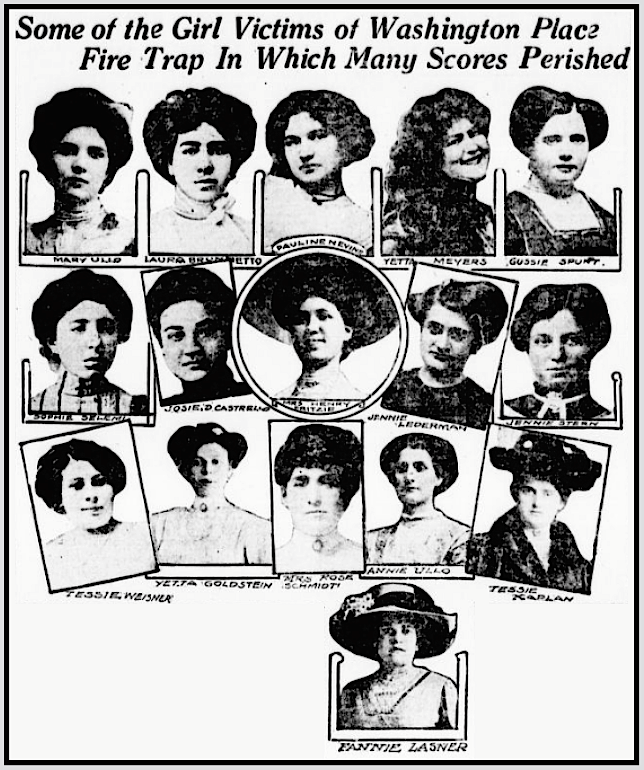
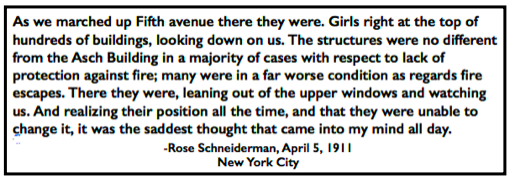 ———-
———-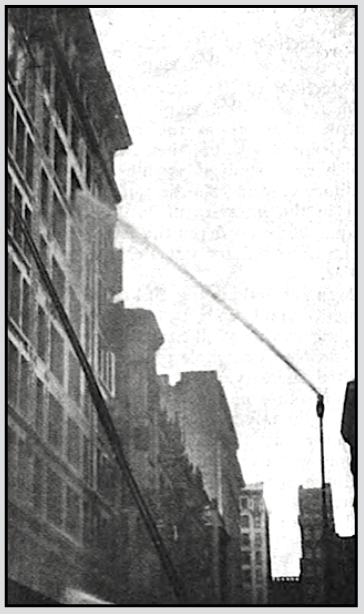
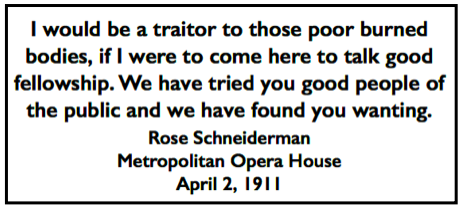 —————
—————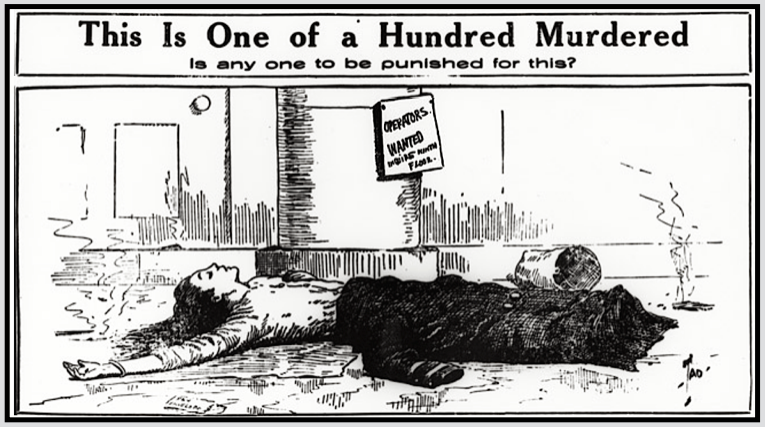
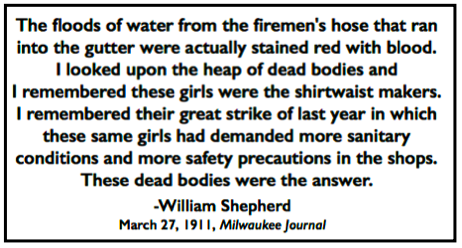 —————
—————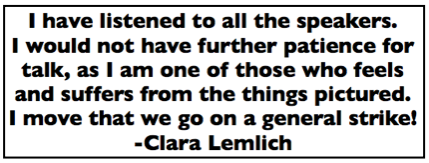 ———-
———-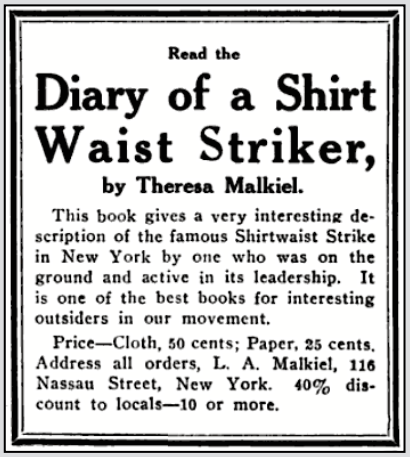
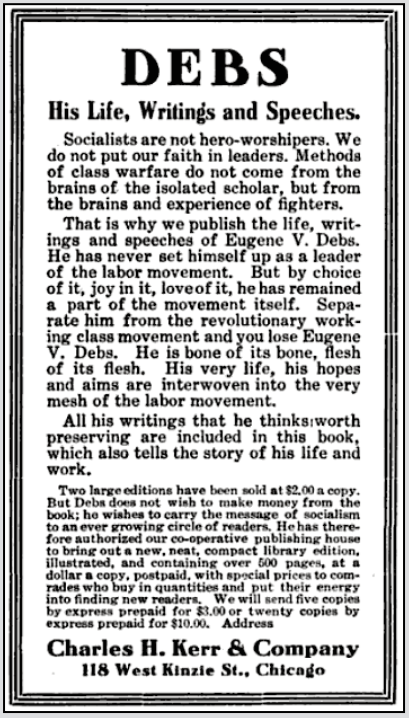
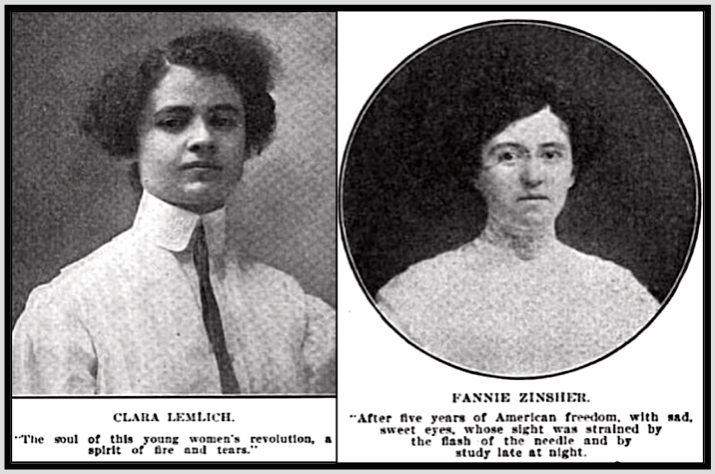
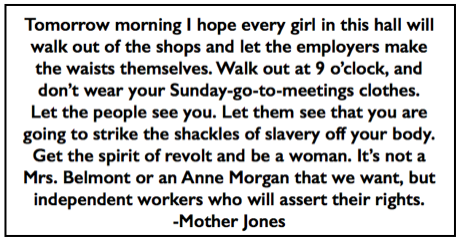 ———-
———-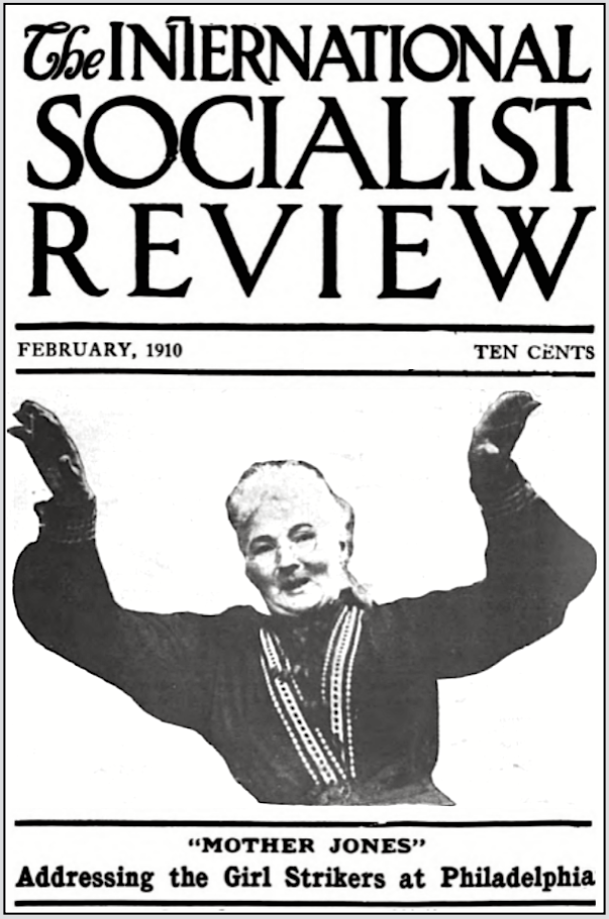
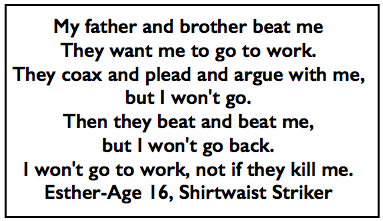 ———-
———-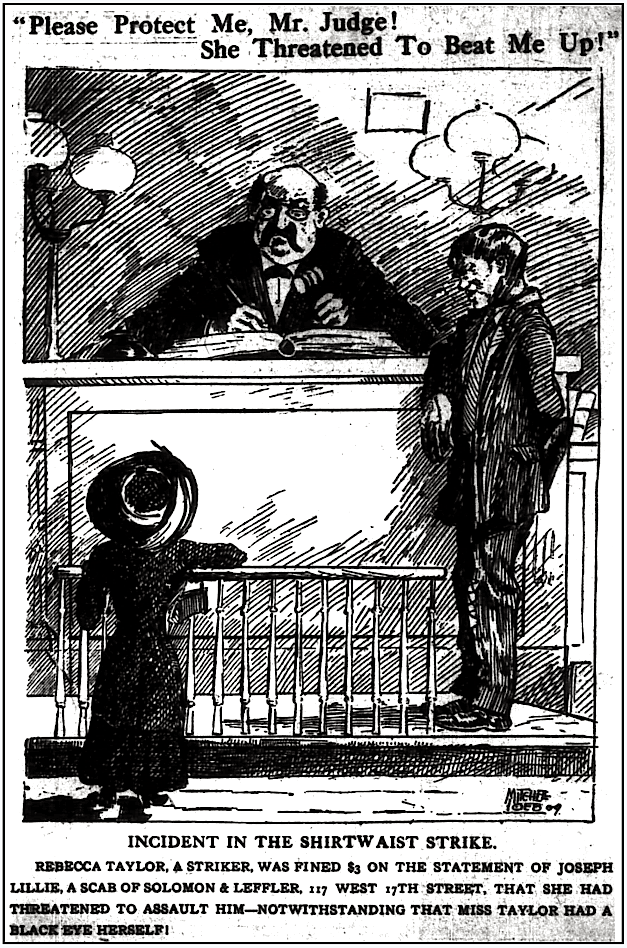
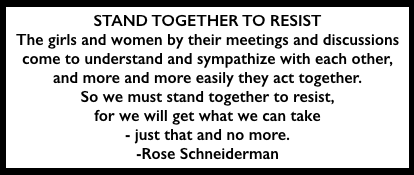 ———-
———-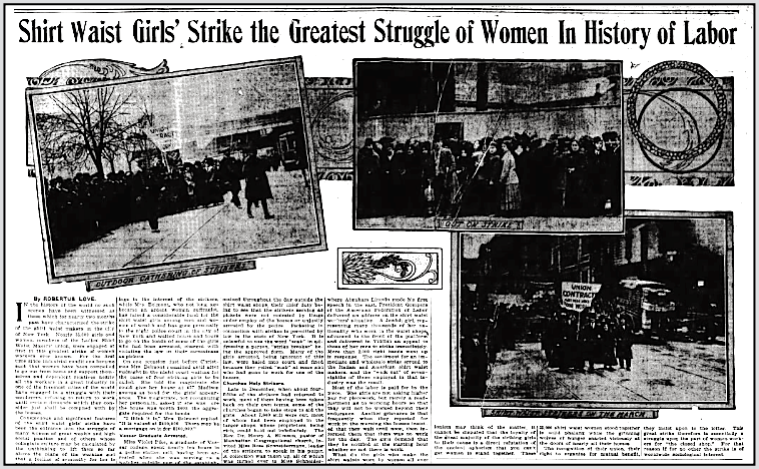 —–
—–